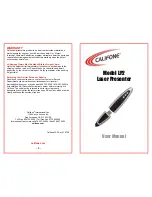
Temperature control
187
Goldeye G/CL Technical Manual V4.1.1
Influence of temperature on the sensor
During operation, power consumed and dissipated by the internal electronic
components causes the interior and case of the camera to heat up.
The InGaAs sensor is affected by temperature in two ways:
1. Absolute level of sensor temperature
An increase in sensor temperature has a negative impact on the image quality
of the InGaAs sensor (FPA), for several reasons.
-
An increased sensor temperature increases the dark current of the FPA’s
photo diodes, thus decreasing the dynamic range of the camera. As a rule
of thumb, a temperature increase of 8 K doubles the dark current. The dark
current produces additional offset and noise, especially at longer exposure
times, which causes a decrease in image contrast.
-
The spectral sensitivity may change: a difference in temperature may cause
the sensitivity curve to drift or to become slightly narrower.
-
Certain components of the InGaAs sensor are prone to temperature drift.
2. Fluctuation of sensor temperature
If the temperature influence on the sensor remains constant, this ensures
constantly high image quality. To achieve this, the temperature of the sensor is
stabilized at one of several defined setpoints.
For the Goldeye stabilized and cooled models, three or four setpoints are
defined, depending on the camera model.
To ensure a consistently optimum image quality, the influence of temperature
change needs to be minimized. Two measures are taken to achieve this:
•
Temperature control of the sensor
•
Neutralization of the temperature influence
The ways of temperature control that are realized with Goldeye cameras are
described in detail below.
Caution: Burns to the skin possible if camera housing is hot.
The camera housing may heat up during operation. Touching the camera with bare
hands may lead to injuries.
Wear protective gloves when touching a heated-up camera during operation.
Also, use proper heat dissipation methods to keep the camera as cool as possible.
















































